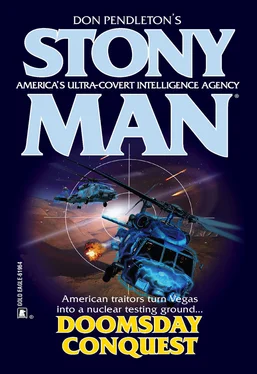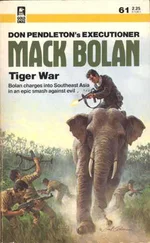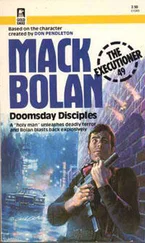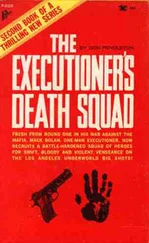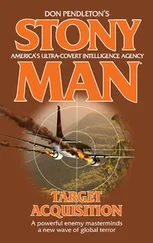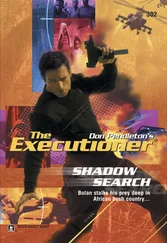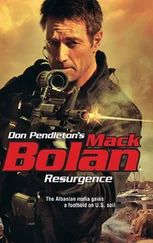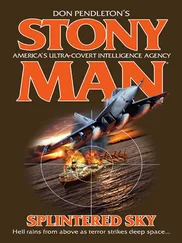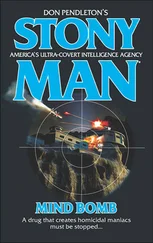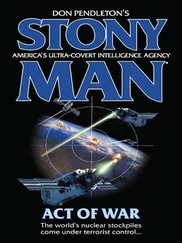“Yes?”
“It’s sodium chloride.”
“Salt? You are telling me, comrade,” Kolinko said, throwing an arm at what was at the deep end of the pass, “that those men were—what? Turned into pillars of salt from outer space?”
Dovkna nodded inside his bubbled head. “That is precisely what I am saying.”
Kolinko staggered back a step, then froze, aware of the pleas and pitiful cries he’d up to then forced deaf ears to. Now, his mind tumbling with questions and fears holding no foreseeable answers or solutions, he stared up at the Tajik rebel, hovering some twenty feet in the air.
Nuclear power was a disaster begging to happen. Off the top of his head, he thought of Three Mile Island and Chernobyl, the most notable of grotesque nuclear reactor accidents, or the ones at least known to the world at large. Where they were concerned, he pictured—from an educated guess based on experience and access to classified intel—their reactor cores blew, most likely, due to incompetence, quasi-ignorance of the volatile nature of fission reaction under extreme stress, and the brazen zeal of self-proclaimed genius in search of the next quantum leap, that bold but proved foolish notion that Science Man adhered to the belief they could learn more about nuclear power through trial and error. Tell all that, he scoffed to himself, to those dying in protracted misery under radioactive clouds that were most likely still spreading to God only knew how far and wide.
Madness, he decided, and for what? All in the name of progress? The advancement of civilization or global annihilation? Either way, Man may prove someday to be his own worst enemy, but he hoped he wasn’t around to see it, though his three children might. No tree-hugger or global-warming doomsayer, he was an ace Stealth pilot of two Gulf wars, in fact, who’d churned up whole square miles of earth into smoking craters where not even a dandelion could sprout in the next foreseeable generation. But he still believed Man either took care of Mother Earth, or Mother Earth would take care of Man. That in mind, nuclear-powered submarines and battleships, he weighed, were nightmare scenario enough, but easily dispensed with as far as cover-ups went. Scuttle the works and the truth sank to the bottom of the ocean, where only a few in the loop were the wiser.
All those potential catastrophic voyages, but vessels chugging along over vast stretches of empty ocean?
No sweat.
Try flying, he thought, a supersonic fighter jet with a nuclear reactor’s guts cored with U-238, meant to torque up the yield of Pu-239 to keep on giving the gift of record-shattering speed and hang-time. Talk about flying Armageddon, but the doomsday potential for such a craft, he knew, hijacked and commandeered by the enemies of America, was less than zero.
At least for the immediate future.
Still, the more United States Air Force Major Michael Holloran pondered the facts as he knew them, considered what was housed, aft in their superbird, the more he believed he harbored some dark bent toward suicide. Or was it simply his nature, he wondered, a hyperachiever in his own right, pushing the limits of personal reality and talents to the edge, a middle-finger salute to fate to dare force him to stare into the abyss, face his own mortality? Certainly, he knew, whatever drove him to chase the next figurative or literal horizon had cost him two marriages, rendering him a man alone now among the gods of ultratech, transcended in some way beyond the norm he couldn’t quite define, but could surmise he wasn’t sure he liked all that much, given what he knew.
Get a grip, he told himself. He had a job to do.
They were sailing along at supersonic speed, Mach 5 to be exact, eighty thousand feet and change above the Canadian province of Saskatchewan, bearing down on the U.S. border; ETA a little over three minutes and counting. With what he knew lay ahead, those anxious thoughts began whispering louder over everything that could go wrong, near hissing, he imagined, like the highly flammable pure oxygen being pumped into his helmet. This was, after all, the maiden voyage of a classified prototype and ultrafighter jet that shouldn’t—and officially didn’t—exist.
Three years earlier a celestial mystery had fallen to the continental U.S., and it now powered the craft. And lent it properties far exceeding the narrow prism of Man’s understanding.
Thus, lack of knowledge about unknown properties and alloys—and he knew whatever the truth was being jealously guarded from those who now bore the task of flying the thing, as in himself and his copilot—should provide fear enough for him to reconsider the sanity of all involved.
For instance, the reinforced glass—if that’s what it even was—was as classified as the fuel that could propel them to Mach 10, more than three times faster than the now-retired SR-71 Blackbird, which had previously owned the world’s speed record of plus Mach 3. Officially—sort of—the fuel was classified as supergrade JP-7, the juice that kept the Blackbird aloft and a streaking black blur beneath the heavens. Why, then, was it pumped into the wings from a massive lead-encased tanker by hazmat suits in a hangar guarded by both armed sentries and batteries of surface-to-air missiles and M-1 Abrams tanks? Or was the answer so obvious…
The visor trapped the sound of his own grim chuckle.
In practical working theory, he knew they shouldn’t have even gotten off the ground, but the superjet and its power source defied all laws of aerodynamics, nuclear physics and gravity. Whether or not the reactor was a prototype, for instance, scaled down to near-dwarf stature in comparison to the mammoths that powered nuclear plants, it was still housed in a steel container, wrapped, in turn, by thick concrete walls. Therefore, the tremendous weight alone should have created drag enough to virtually snap off the tail.
Oh, but there were answers, he knew, as unbelievable as they might sound.
Yes, perhaps they believed him, in the dark and blissfully ignorant, those black-suited DOD superiors, their armed goons and aerospace engineers contracted out by Lockheed, but he’d caught on the sly the floating rumors. Since no secret was really ever such, he’d come to know that what they referred to as “the Divine Alloy” was a molten ore of some type from deep space. Whatever the unknown substance, he knew it was blended somehow with carbon-fiber laminates and aluminum and titanium, stem to stern on their ultratech ride. Likewise, cockpit and reactor housing were coated with the Divine Alloy. Which, believe it or not, made the superjet, code-named Lightning Bat, lighter than air, but able to withstand all the mass, thrust and gravity that Earth could pound mortal flesh with, once the shield was activated prior to takeoff. Moreover, their shield, sealed inside by the alloy, converted the cockpit into some vacuum of space, spared them G-force that should have crushed their insides to pulp. Rendered weightless by the Divine Alloy, they would have floated to the ceiling, pinned there, if not harnessed into their seats.
Holloran checked the instrument panel. All green, all systems go, he found. Comprised of intricate supercomputers, once the codes were punched in, he knew from two years of 24/7 training and virtual reality flight simulators that technology did roughly ninety percent of the work. From speed to navigation, down to calibrating the payload in the fuselage, Lightning Bat nearly had a mind all its own.
So why did that disturb him?
It was just about time, he knew, checking the digital readout to countdown, aware their audience was anxiously waiting back at Eagle Nebula, ready to monitor the test flight via camera link-up, once Lightning Bat descended and leveled out within a hundred miles of the area in question.
Читать дальше
